In 1993, the Working Group on Influenza Pandemic Pareparedness and Emergency Response - GRIPPE - launched in the US. It was chaired by Nancy Cox, who left in 1996.
And hold on to your hats, because the extraordinary coincidences are about to go ballistic.
-
In 1997, Peter A. Patriarca and Nancy J. Cox released a report titled ‘Influenza Pandemic Preparedness Plan for the United States‘. It’s an exceedingly interesting release, given the background of similar efforts driven by the ESWI in Europe, not forgetting the WHO 1999 Pandemic Plan, which in fact was penned by the ESWI.
I’ve covered this to quite a significant extent, first article here. Heads up - there’s a specific reason I link part one here as opposed to the other articles.
The 1997 H5N1 Pandemic That Wasn't
Let's rewind to Hong Kong in the year 1997. Supposedly, when H5N1 left its terrifying mark, jumping from animal to human. The zoonotic event, which paved the ground for future action on what would eventually become One Health. Because this story... smells
The general gist here is one of surveillance and vaccination, which really were overriding factors since the first attempt at drafting a plan was carried out in 1978. But it adds a plethora of additional inputs worthy of discussion.
Criteria for declaring the pandemic must be defined
This is an interesting inclusion, because it’s in short a call for the WHO to be handed this rather crucial task, and thereby become of systemic important in this regard.
Policy must be integrated with other initiatives, such as adult vaccination in general
Why this matters is because this signals that this isn’t really just about influenza pandemics. The response, and the plan, should be implemented in other related regards, which ultimately will create one powerful agency in charge of all of this. No points for coming to the realisation that this, indeed, is the plan.Extensive inputs from big pharma has been solicited + liability coverage
In other words, this is part informational, and part a sales pitch for big pharma. Liability exemption requests could be observed already in 1976, but it’s still worthy of note.Vaccination of the entire US population is the assumption
All of this is working on the assumption that risk of side effects is net positive - and history has not been kind to this assumption.A pneumococcal vaccination should be given equal priority
… and bam. There’s the second vaccine sales pitch. You didn’t think they would just stop at one, did you now?Expansion of the vaccination target population to 'non-traditional groups', such as healthy children and adults
If children and adults are healthy, little reason to vaccinate. You can argue that this is yet another sales pitch, but you could similarly argue it’s an early life-course vaccination pitch as we see, ie, in the Immunisation Agenda 2030.Antivirals may not be a 'feasible strategy' due to potential side effects
Personally, I find this claim unbelievably self-serving, bordering on an outright shameless lie - especially given historical events related to influenza vaccination. I’ve further always found the support of antivirals at best half-hearted in these documents, and I will address this point later on.
We also see a range of references to the ESWI lot, including references 11 and 22 - ‘Options for the Control of Influenza’.
At this stage, I’m going to throw in a couple of links to prior articles in this regard - because they are important.
The Immunisation Agenda 2030 is here, it’s literally an ode to vaccination.
The Immunisation Agenda 2030
'Together we really can build a world where all benefit from the advancements and miracle of modern vaccinology' And in the context of One Health, it appears increasingly clear where this slots in. - I covered this a while back. But sometimes, it’s good to retread old ground, because it allows you to slip in more actors, and a more precise context. And it’…
The link (H5N1) near the top also outline how the WHO’s 1999 Pandemic Plan was, in fact, penned by the ESWI. Keep that in mind as I dig out the next document.
And in this regard, keep in mind how all of this eventually became a WHA Resolution.
Resolution WHA56.19
‘… many of these deaths could be prevented through increased use particularly in people at high risk, of existing vaccines, which are safe and highly effective…‘ - It’s the WHA56.19 resolution from May 28, 2003, probably the earliest express call for a '
-
The 1997 Pandemic Plan draft above was given an update in 2002. And that’s where the wheels of the narrative come entirely undone.
It’s the ‘Influenza Pandemic Preparedness Action Plan for the United States: 2002 Update‘, to which, notably, Nancy Cox did not contribute. Or did she?
It starts off in usual tone; a national plan, surveillance, vaccines, public-private-partnerships. So far, so good.
However, on page 2 it explicitly - and repeatedly - drags in the 1999 WHO (ESWI) Pandemic Plan, thereby outlining the influence on US legislation as well.
It carries on by shifting the focus from national to global perspective, and encourages ‘regional’ pandemic plans - this, of course, eventually becomes a call for a global plan, a pandemic treaty. Helpfully, this part concludes with -
‘This report reviews the major concepts described in the current influenza pandemic preparedness plan under revision in the United States and updates a previous report‘
Thereby nailing down that this is an update on the 1997 plan above, make no mistake, as the prior is explicitly referenced.
It goes on to note that the CDC has supported a national influenza surveillance system in China to increase the number of influenza isolates available to the CDC and the WHO network for analysis. This initiative launched in 1989, with 6 surveillance sites. Is this common knowledge? First I’ve heard of it.
But it then goes to claim that an active surveillance program in Hong Kong led to the identification of the claimed H5N1 virus in 1997.
And that is… entirely new information. Because the official narrative states that it was a Dutch team - including ESWI senior, Ab Osterhaus - who identified it by August.
What this means is that either the Dutch team at this stage were already part of an active surveillance program, or it’s an outright lie. I frankly do not know which is the worse reading here. Fortunately, they helpfully provide a link to said story, carried by the Lancet. Yes, this is about to become a hell of a lot worse.
‘All seven patients older than 13 years had severe disease (four deaths), whereas children 5 years or younger had mild symptoms with the exception of one who died with Reye's syndrome associated with intake of aspirin’.
One person - under 5 - died with Reye’s syndrome associated with intake of aspirin. Let me just drive this home by outlining where the issue is here. This is from the H5N1 link above -
‘May 1997, a 3-year-old boy in Hong Kong contracted an influenzalike illness, was treated with salicylates, and died 12 days later with complications consistent with Reye syndrome…
of which 5 were fatal (one in a 13-year-old child and four in adults, 25, 34, 54, and 60 years of age).‘
The only death to take place in a child below the age of 5 was the initial case in May. This served as the very basis of the entire H5N1 claim, per Ab Osterhaus and the WHO by extention.
The Lancet article just owned up to that original case - which is alleged to have confirmed H5N1 - being caused by an intake of aspirin.
And this paper was released February 14, 1998. In the very same issue, this paper also saw the light of day, penned by the same team - incl Ab Osterhaus - which made the H5N1 claim in the first place - ‘Human influenza H5N1 virus related to a highly pathogenic avian influenza virus‘.
That’s right - the 3-year old who so tragically died in May, 1997, died because of aspirin triggered Reye’s syndrome - and NOT from H5N1. And his case quite literally served as the excuse for the entire H5N1 1997 narrative.
And - released in the same journal on that same date, a contrasting paper states that this death was caused by aspirin intake.
There is no way either set of authors did not know about the other paper. Yet, the narrative didn’t collapse on that day.
Why?
I tell you why. Ab Osterhaus et al. in fact state exactly as much -
‘This event illustrates the importance of intensive global influenza surveillance‘
-
But what should be triggering outrage is really just getting started.
See, the 22 cases of anthrax are also mixed in (very convenient timing, that is), this is then used to suggest ‘generic control measures’, including looping in the likes of FEMA and the DOD.
And further, in bullet point form, because there are so many issues in this document -
‘it is unlikely that transmission can be substantially contained by targeting surveillance and vaccination efforts‘
‘clinical screening and quarantine at ports of entry, are not likely to be effective‘
‘Two of the most likely schools and day care centers‘
‘Large-scale use of face masks during the 1918-1919 pandemic had no appreciable effect on community spread‘
‘cancellation of nonessential public events‘
There’s more, but let’s just address these at this stage. First off, they knew masks did absolutely nothing. And they also knew that transmission wouldn’t be affected by surveillane and vaccination efforts - yet they still rolled them out in 2020. And the same goes for screening, and quarantining,
Up until now, the World Bank 2006 document essentially - in great detail - outlining the Pandemic response in 2020 was a solid top-3 worst document I’d read up until I arrived at this one.
I’m not even sure it’s top 5 anymore.
The cancellation of public events, schools and daycare centres they also knew would require public debate. I don’t recall any of that. Never mind, eh?
But we are not done. We are really not done.
‘ensuring expeditious patient discharge from hospitals‘
The patient discharge… caused the elevated Covid-19 morbidity in so many locations that it’s hard to overstate. So many elderly were sent back to retirements homes still sick with C19, who then infected others in similar poor health with an increase in death toll to follow.‘limitations on elective admissions and surgery‘
Limiting admissions and surgery has in contemporary times caused a major cancer spike, certain to drive a large increase in premature deaths.‘patient-isolation plans for use during a pandemic‘
These led to the inhumane decisions, forcing people to die without access to their immediate families at hand. And for what? A bad round of flu, which didn’t affect those under certainly 50 and in otherwise good health.
Here are the executive orders, courtesy of Pennsylvania, New York, and Michigan, returning ill c19 to nursing homes, thereby driving up mortality stats during the early days of the scamdemic.
And the next two items detail how slowly, the global instrument is being erected -
‘issues are similar to those confronted in planning for biological and chemical terrorism, and influenza pandemic preparedness planning can benefit from those efforts‘
And there we go, now we have influenza (and other diseases, requiring surveillance and vaccines) networks joining with bio/chemical terrorism‘Proposed definitions of the phases of a pandemic and suggested responses by WHO and national government agencies are discussed in the WHO pandemic plan [91. It has been proposed that us government pandemic action plan responses should be similar in nature‘
… and there we have another explicit link to the 1999 ESWI Pandemic Plan aka WHO Pandemic Plan.
It continues by making claims of influenza being worse than it is (to ensure the increase in vaccination update), outline an uptake in vaccination rates, … yeah, the end goal here is explicit. Take your magic elixir.
In fact, a 60% target was set in ‘Healthy People 2010’. That’s the Mark Smoliski authored document very early, gently touching upon the Social Determinants of Health.
I covered that document previously over here -
The Determinants of Health
In 2008, The World Health Organisation released a report titled, ‘Closing the Gap in a Generation’. It was the final report of the Commission on Social Determinants of Health. And, much like with ‘One Health’, the genuine objective is hidden in plain view,
-
And the final ground we have left to cover -
‘Develop communication networks and protocols for prompt dissemination of information to public health officials, health care providers, legislators, the news media, and the general public‘
‘Novel breakthrough technologies, such as the recently developed ability to genetically engineer influenza viruses entirely from cloned DNA‘
‘increasing influenza surveillance in animals‘
To repeat - this document is from 2002. Yet, they already had made plans to develop essentially relations with the news media to control the narrative. No, that’s not what the above states, but it might as well have been - it’s after all what took place in 2020.
… and yeah… ‘recently developed ability to genetically engineer influenza viruses entirely from cloned DNA‘. But don’t worry. They’ll only use this to create vaccines, right? Isn’t that how the script goes?
And finally - an increase in influenza surveillance in animals. We previously saw how H5N1 was used as an excuse to install permanent animal surveillance (and vaccines) in Hong Kong in 1997. One Health.
-
I stated above that I would address the (exceedingly) half-hearted antivirals push later on, and the references in the 2002 document outline why I believe so, better than I could possibly articulate. There’s a singular reference. Vaccines, on the other hand…
-
But there’s one thing outstanding here. Because, see, while Nancy Cox no longer was on the original committee (GRIPPE), she still very much contributed to the 2002 update.
She was now on the ‘Federal Interagency Working Group on Pandemic Influenza‘. I assume she was handed a promotion for the stellar work she carried out.
And in that regard, you know who penned the first US Pandemic Plan, the ‘Interagency Work Group on Pandemic Influenza - A Plan for Pandemic Influenza’, released by the Department of Health, Education, and Welfare in 1978?
William H Foege, MD.
The very same man who introduced us the Manhattan Principles in 2004, or as they’re more commonly known - ONE HEALTH
The report, from 1978, for the record includes another common phrase, which I’ve included solely for my own safe and effective amusement -
-
That plan, of course, relates to the fake swine flu pandemic of 1976. And speaking of 1976, you know who joined the CDC in that year?

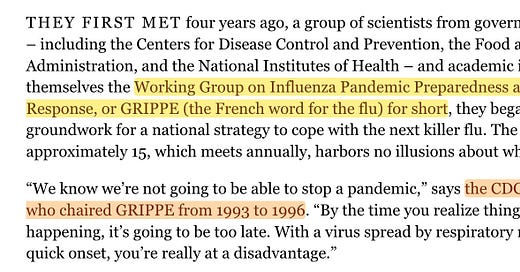



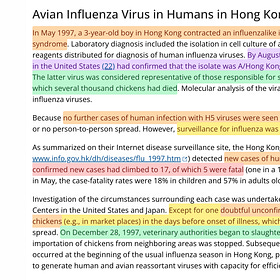


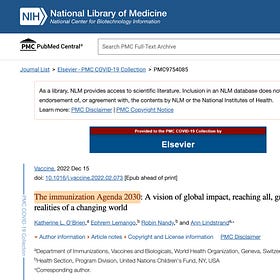



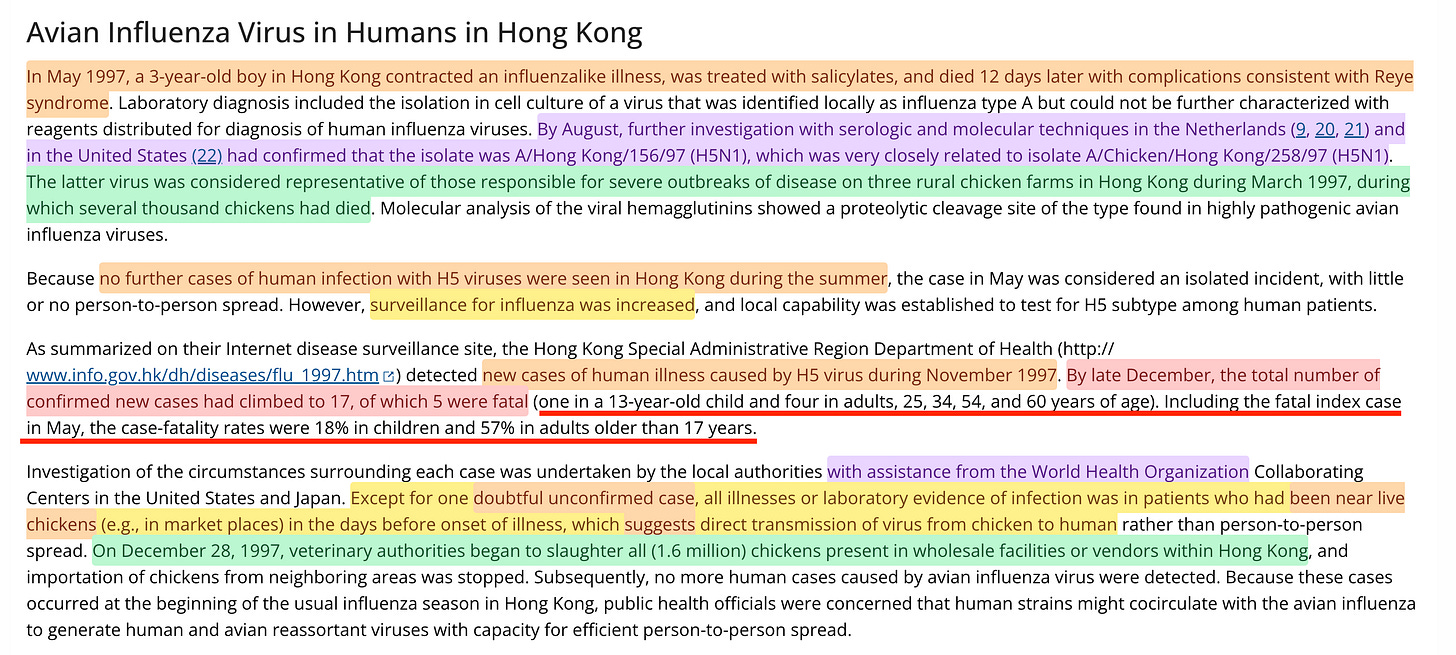






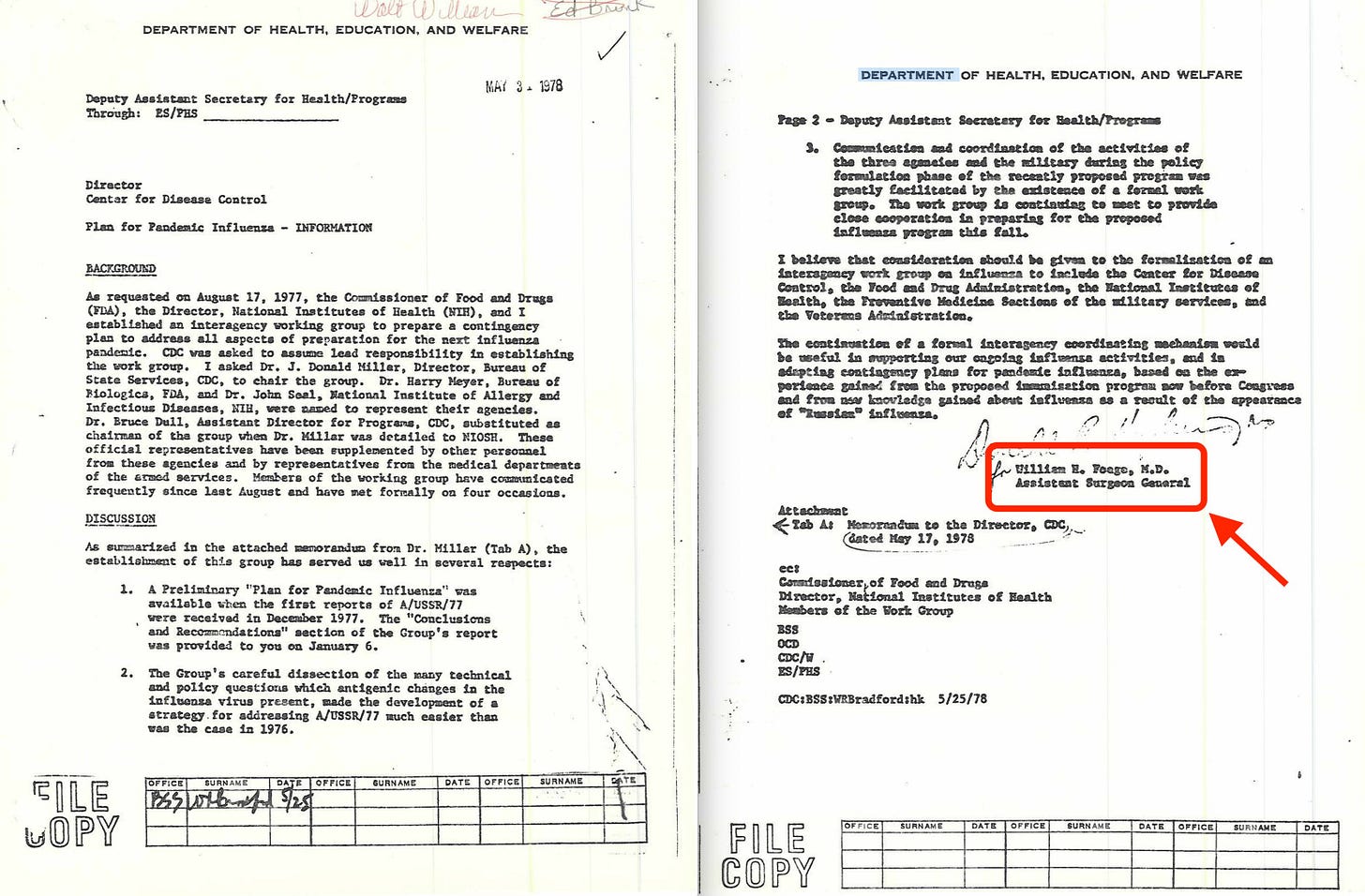


https://pubmed.ncbi.nlm.nih.gov/19788357/
Nice post.
I guess you are aware of this?
Salicylates and pandemic influenza mortality, 1918-1919 pharmacology, pathology, and historic evidence
Also, we note the (possible) positive effect of the pneumococcal vaccine on covid-19 here:
https://wherearethenumbers.substack.com/p/whodunnit-unabridged